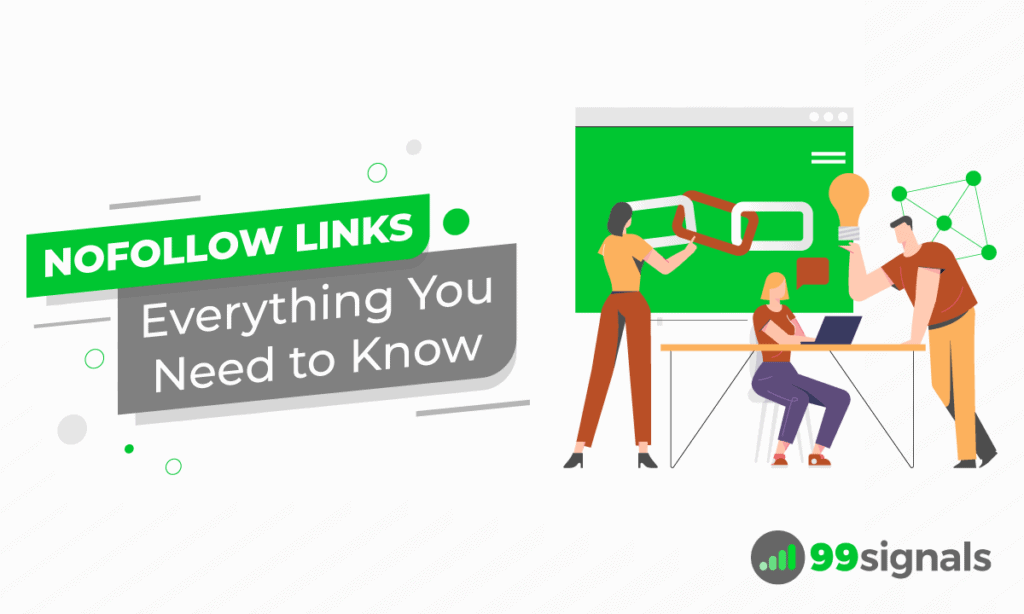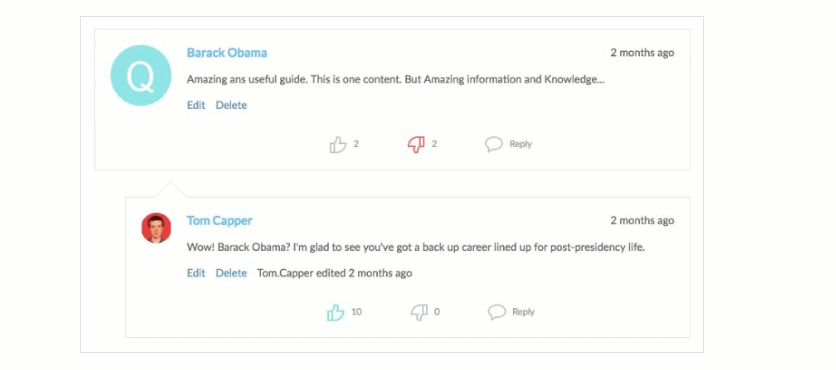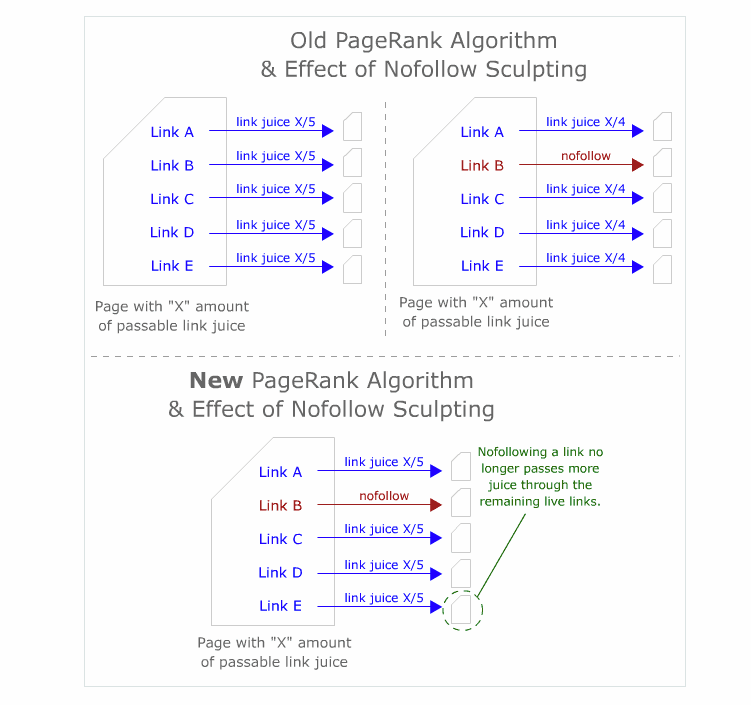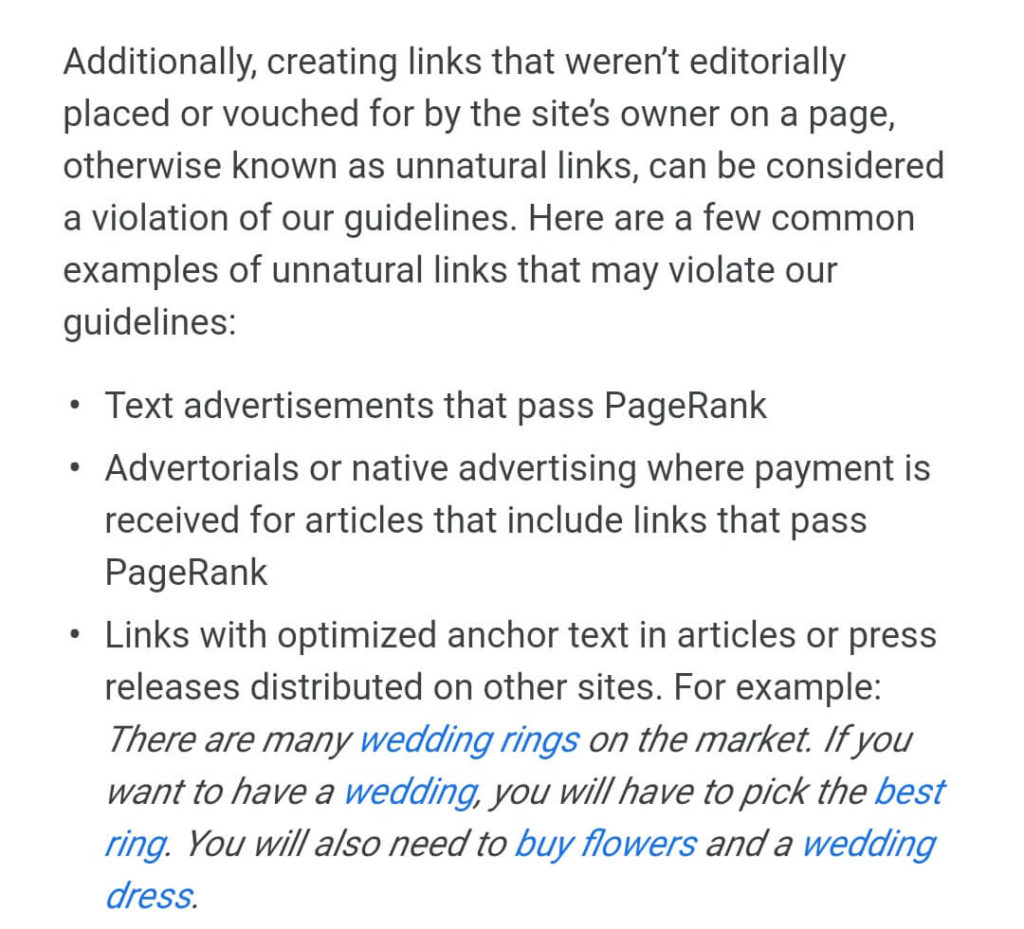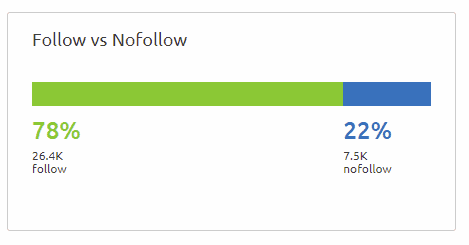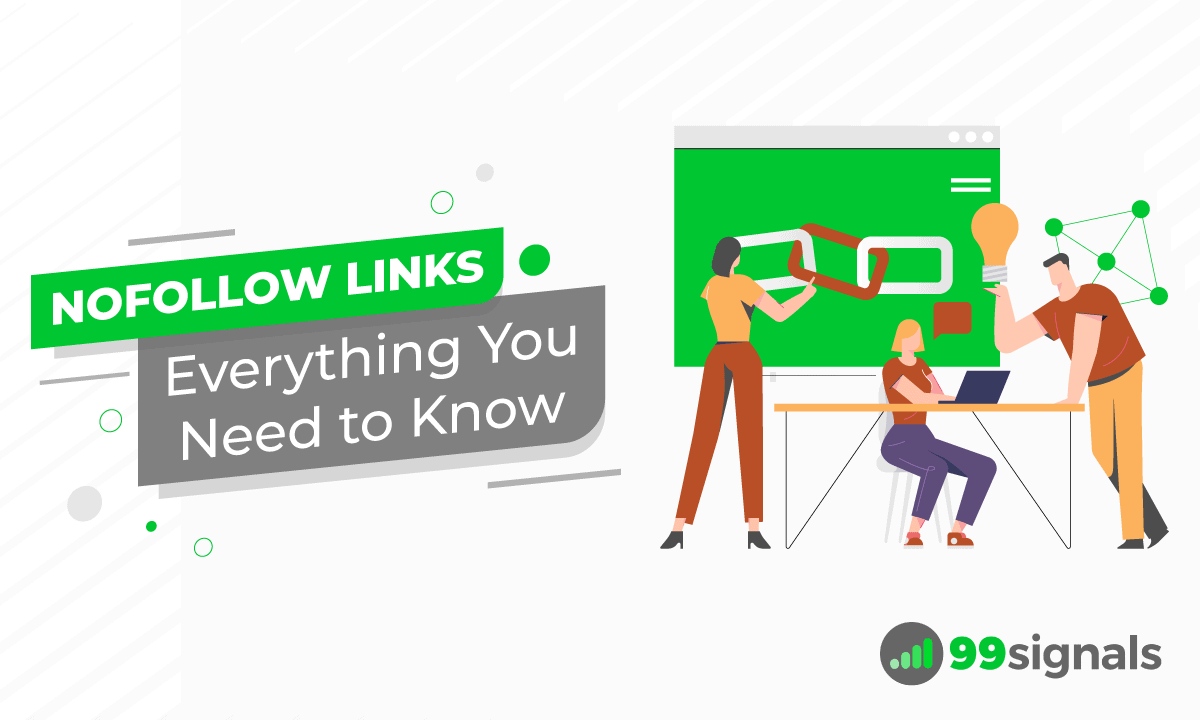I wish I could answer in a yes or no format. But then, I would be depriving you of all the insights and developments leading to the answer. It’s a popular belief that nofollow links do not pass PageRank (aka link juice). Generally, they don’t. But, in certain cases, they shatter this dearly held notion.
Download Now: The Ultimate Guide to Link Building – 25 Actionable Strategies to Build High Quality Backlinks [Free eBook]
The purpose of this blog post is threefold, i.e, to understand: With that being said, let’s dive into the topic.
The Difference Between Dofollow and Nofollow Backlinks
Nofollow links are links with rel=”nofollow” HTML tag applied to them. The tag mainly tells search engines not to follow them. Google does not transfer PageRank or anchor texts across these links and, therefore, they should not influence search engine ranking. In simple words, when a person plays with the HTML informing Google not to give any link juice to the referred webpage, it is a nofollow link. On the outside, all links look the same. But, when you look at the technical side of them, the difference becomes obvious. Every link is a dofollow link unless there is an additional rel=”nofollow” tag. Although you can add the HTML tag on each and every outbound link separately, it is possible to nofollow all the links on a webpage by using plugins like “Title and Nofollow For Links” or “External Links”. You can then remove the nofollow attribute on selected links and turn them into dofollow ones.
Why Were Nofollow Links Introduced?
It all started in 2005 – Goodbye Comment Spam!
The problem of blog comment spamming was sucking the entire blogging community’s blood and the online giant decided to do something about it.
(Image Credit: Moz) Google announced in early 2005 that hyperlinks with rel=”nofollow” would not influence the link target’s PageRank. Following this announcement, Yahoo, Bing, and other search engines quickly followed suit and decided to respect this attribute value. WordPress and other CMS systems today “nofollow” blog comment links by default. However, solving one problem led to the rise of another. A few years later, Google’s Software Engineer, Matt Cutts, returned with a new announcement.
2009 – Controlling PageRank Flow
In 2009, Google introduced changes in the way how GoogleBot treated “nofollow” links so that webmasters could no longer manipulate the links for PageRank Sculpting. “Nofollow is a method to annotate a link to tell search engines “I can’t or don’t want to vouch for this link.” In Google, nofollow links don’t pass PageRank and don’t pass anchor text. So what happens when you have a page with “ten PageRank points” and ten outgoing links, and five of those links are nofollowed? Originally, the five links without nofollow would have flowed two points of PageRank each (in essence, the nofollowed links didn’t count toward the denominator when dividing PageRank by the outdegree of the page). More than a year ago, Google changed how the PageRank flows so that the five links without nofollow would flow one point of PageRank each.”
What is PageRank Sculpting?
PageRank is an algorithmic formula used to decide the value of a web page based on the quantity and reputation of other web pages linking to it. Back in those days, PageRank was divided equally between all the outbound links on a webpage. Imagine the links as pipelines through which link juice flowed from the referring page to the referred page. For example, if a web page had a PageRank of 10 and there were 5 outbound links on the page, the PageRank passing through each link, to the target page, would be 2. So what did Google change in 2009? It changed the role played by “nofollow” links in the PageRank game. Considering the previous example, let’s say that 4 of the 5 links had nofollow attributes. Earlier, these nofollow links would stop the flow of PageRank to the target pages and deviate the full PageRank through the remaining dofollow link. Which means, a PageRank of 10 would flow through that one dofollow link (with a certain damping factor.) This caused SEOs to bend the rules in their favor by adding nofollow attributes to less important pages and diverting all the juice to their sales (or money) pages. Anyone could boost the power of a page by linking it to a high PR page and changing the attributes of all the other links to nofollow. The following graphic from moz clearly illustrates the before and after scenario regarding nofollow links and PageRank.
When Google changed the flow of PageRank in 2009, link juice was divided equally among all the links on a page irrespective of their nofollow or dofollow attributes.
2013 Update – Beware Advertisers!
In order to create a level playing field for all the webmasters out there, Google decided that paid links should not forward PageRank. Which means they should carry the rel=”nofollow” tag. Google also strongly criticised hidden forms of advertising and introduced Link Schemes to bring things under control.
In this context, make sure you nofollow all the affiliate links and paid ads you post on your site unless you want to be penalized by Master Google. Bottom Line: EARN your backlinks or get penalized. We are not sure about how the nofollow dynamics work today in terms of PageRank. In fact, following the discontinuation of PageRank Toolbar by Google in 2016, there has been no evidence of the involvement of PageRank as a ranking signal. But some experts claim that PageRank is still relevant.
When To Use Nofollow Links (and How to Identify Them)
Google’s algorithm is designed to boost valuable sites and penalize bad ones. Keeping this in mind, if you, unfortunately, happen to be the one linking to a bad site, you will most likely face the wrath of Google. It’s a common practice among big websites like Forbes and user-generated content sites like Quora, to nofollow all the links on their website. Why? These high DA sites link to a lot of different sources and its unreasonable to verify the authenticity of each and every one of them. By using nofollow links, these sites protect their credibility and avoid being taken advantage of by unethical link builders. All they’re telling Google is that they don’t know where the links are pointing towards and, therefore, not to follow them (Bad news link-sellers!)
Next time you’re on a hunt for backlinks, use Chrome Extensions like “Nofollow”. It highlights all the nofollow links on the web page making it easy to go after sites with followed links. Here is an excerpt from Business Insider where all nofollow links are highlighted.
Nofollow Links and SEO – Seriously?
Consider that you spend a great chunk of your money and time on building high-quality backlinks and all of them turn out to be nofollow links. Does this mean all your work just went down the drain? Not necessarily.
1. Nofollow Links Are Still Links
Most authoritative blogs and social media platforms use nofollow as part of their linking strategy. Does this mean you’ll avoid these platforms altogether? The whole purpose of link building is to build awareness and share valuable content with others. Google perceives you to be of value when you’re linked by high quality sites and thus, will give you a boost in ranking. Although they use nofollow links, authoritative blogs like Entrepreneur and Wikipedia can direct boatloads of traffic to your site. Moreover, irrespective of nofollow or dofollow, having your brand name as the anchor text, creates brand awareness and encourages people to search for your brand on the internet. Avoiding nofollow backlinks from major sites will deprive you of the traffic, brand awareness and the possibility of scoring tier 2 links (other sites linking to you.) When Sandeep Mallya (Founder of 99signals & Startup Cafe Digital) was interviewed by Entrepreneur, all the referrals linking back to Startup Cafe Digital were nofollow links.
Well, a nofollow link is still a link and being published on a reputable site like Entrepreneur is not an everyday thing. After all, why do you want to rank #1 on Google? It’s because you want people to find and click on your website. Getting linked by reputable sources gives a similar result and it makes no sense to squander the opportunity by avoiding nofollow links. Bottom Line: On the right platform, it doesn’t matter if the backlink is nofollow or dofollow. Just go for it.
2. Yes, They Boost Search Engine Rankings
According to Adam White, founder of SEOJet, most web pages that rank #1 on Google, on average, have 20% – 40% nofollow links pointing towards them. (Check out his case study on SEMrush blog) These webpages are probably ranking well because of a natural link profile. But, the possible influence of nofollow links on ranking can’t be neglected. Google’s algorithm is complex. Although not declared openly, it secretly boosts nofollow links from high authority sites. But why is Google going against its own rules? As discussed earlier, large websites employ a nofollow link strategy to protect their authority. This has another angle to it. If nofollow links mean nothing, webmasters have no option but to seek followed links from sites of lower authority if they intend to rank well. If that happens, some untrusted content might find its way above the content backed by highly credible (nofollowed) sources. Google understands this problem and secretly passes “trust flow” through nofollow links referred by authoritative sites. Besides, backlinks are not the only ranking factor for search engines. Web content quality and social signals are also significant for SEO. Nofollow links from reputable sites and social media channels speak volumes about your content quality and value delivered and thus, help you rank well on search engines. This means a nofollow link from Forbes may be more valuable than a dofollow link from a blog of lower authority. This may not be always true. But, depending on the situation, nofollow links are useful when it comes to SEO.
3. A Natural Backlink Profile – They help Google Trust You
Did you know that having a certain percentage of nofollow backlinks is an important factor for Google to trust your brand? What kind of a brand has 100% dofollow backlinks? Certainly one that has adopted unethical ways to earn them. When most big blogs and social media platforms refer via nofollow links, it is impossible for any brand to have an insanely high percentage of followed backlinks. A good link profile looks somewhat like this:
One more important characteristic of a REAL brand is running ads, which, by the way, are nofollowed. Although Google doesn’t crawl nofollow links, it is definitely smart enough to know what’s on the other side of the link. A brand that runs paid ads tells Google that it’s real and trustworthy. Besides, having a natural link profile might save you from the dreaded Google penalty. Google bots, or the “policemen”, regularly crawl websites and they don’t go easy on rule-breakers. Have an unnatural link profile is enough reason for your competitors to send a spam report to Google, get you penalized and throw you deep down the ranking ladder. Bottom Line: Having a mix of followed and nofollow backlinks is a clear indication to Google that you’re real and are playing the SEO game ethically.
Conclusion
Google may not have decided to value nofollow backlinks as a ranking factor. But, it passes a trust score if the referring site is credible. It’s advisable to approach link building with a white-hat, long term mindset. As Google Webmaster Guidelines rightly indicate- “Avoid tricks intended to improve search engine rankings”. A good test would be to ask yourself- “Will this help my users?” or “Would I do this if there were no search engines?” The mantra should be to build backlinks from trustworthy, reputable and diverse sources and avoid questionable ones. Lesson learned – Nofollow links are not be frowned upon anymore. If you found this article useful, please share it on Twitter using the link below: [ctt template=”4″ link=”eg9YF” via=”yes” nofollow=”yes”]Nofollow Links: Everything You Need to Know[/ctt]
Image SEO: 7 Actionable Tips to Supercharge Your Organic Traffic 35+ Best Free SEO Tools to Instantly Boost Your Rankings 15 On-Page SEO Techniques to Increase Organic Traffic
